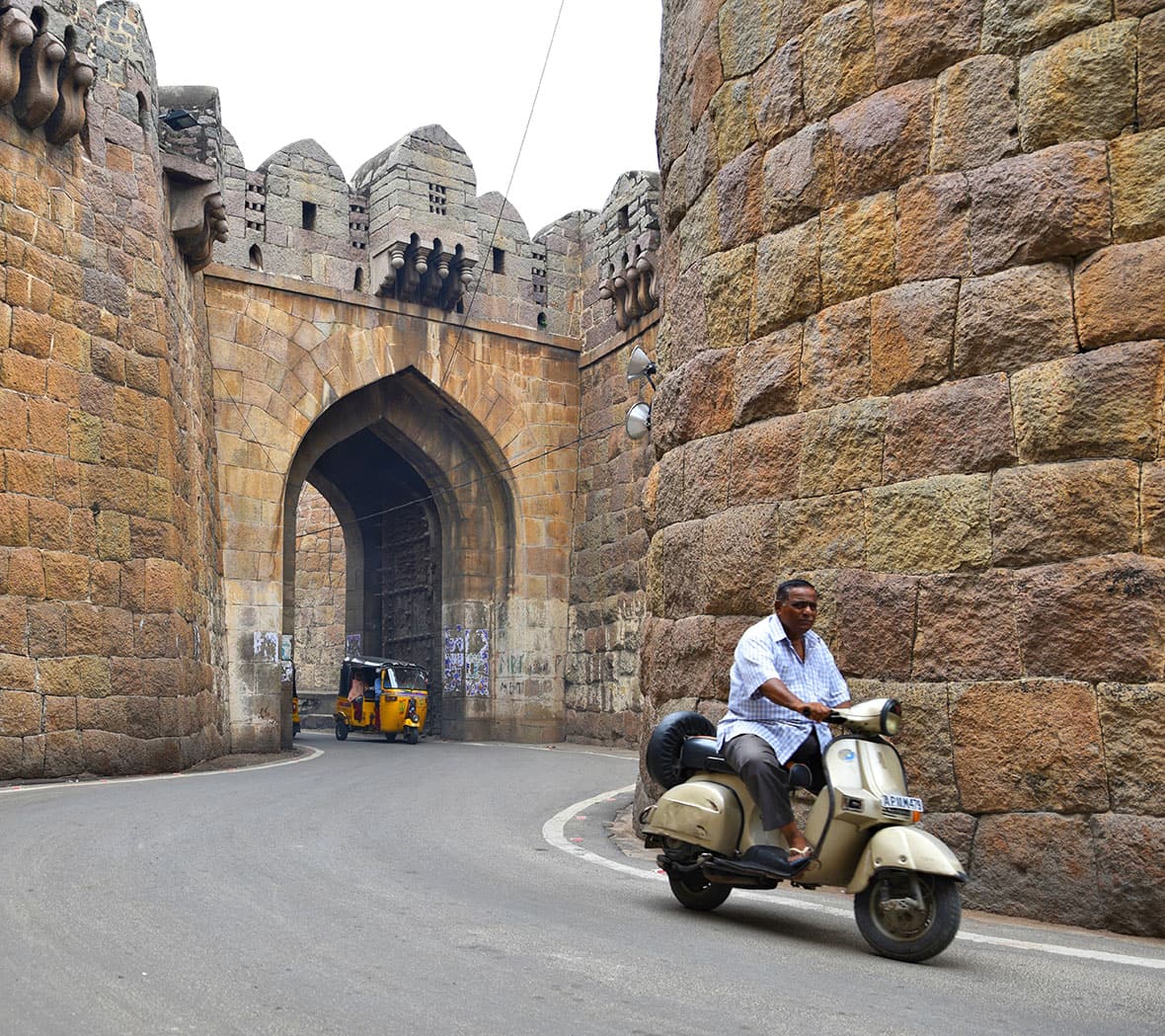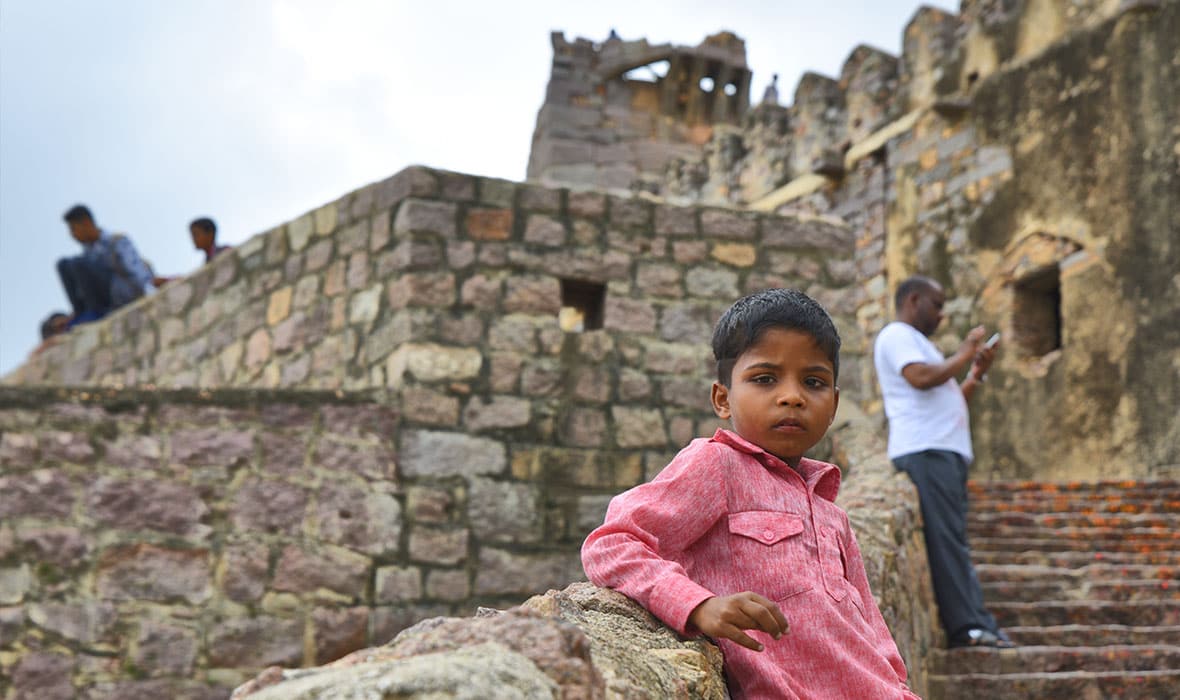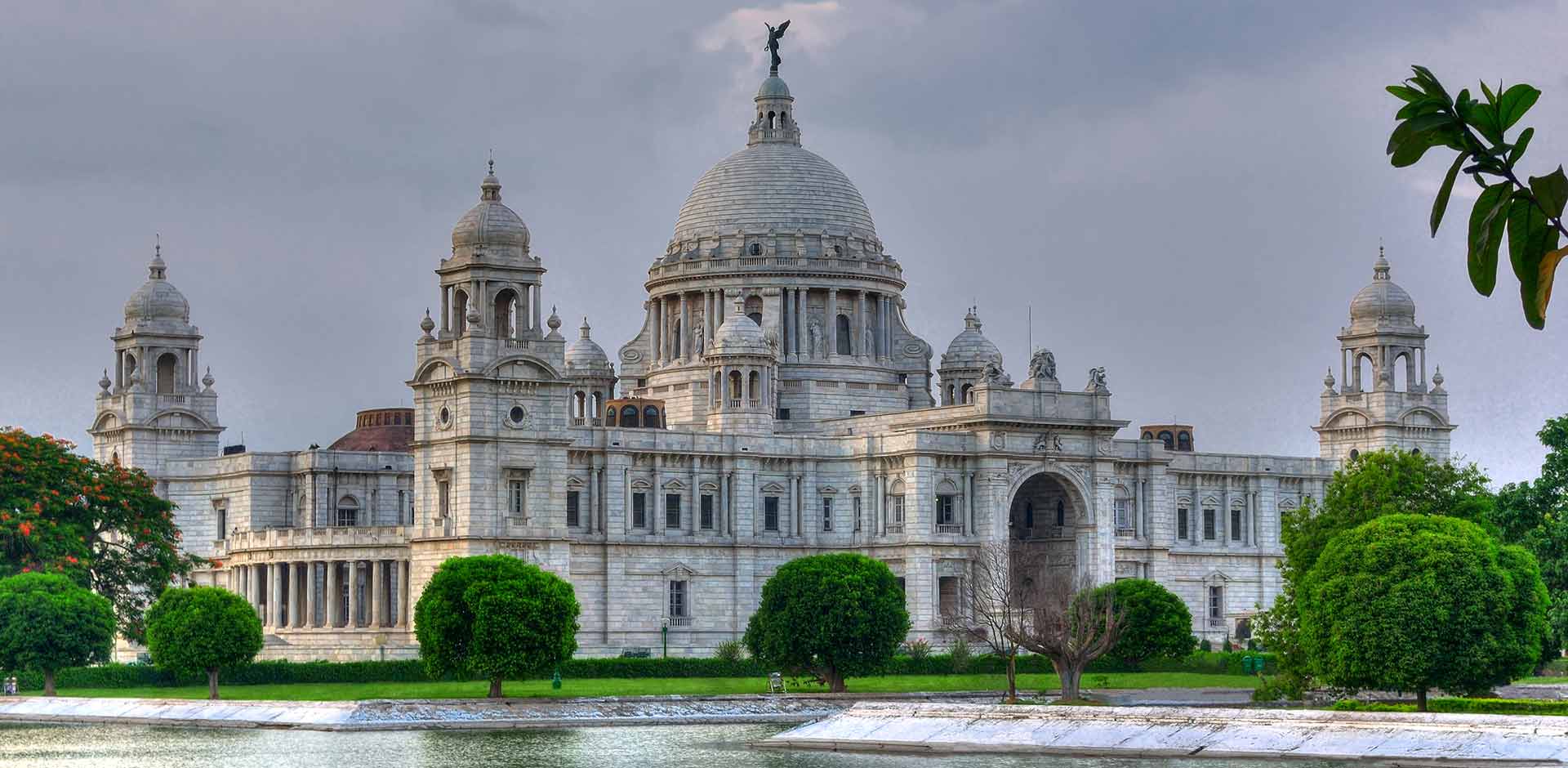The sound takes me by surprise. I thought I was alone in this ancient stone hallway, which is why I snap my head around when I hear a loud clap. But there is no one behind me, or in any of the adjoining corridors. Then, once more, I hear the noise of two hands colliding, this time repeatedly. I leave the hallway, walk out into the blazing sunlight and look up the hill above me. There, at least 200 meters away, I see a young boy clapping as he walks along a wall of the Golconda Fort. This 700-year-old fort in Hyderabad is renowned for its acoustics.

ABOVE: Players in the Golconda.
Perched atop a rocky outcrop on the western outskirts of the city, this imposing citadel was once the hub of a powerful Indian dynasty, the Qutb Shahis. This family ruled the Golconda Kingdom in southern India from 1518 to 1687, and expanded the existing fort, designing it to maximize acoustics for security purposes. Each building and fortification within the citadel was shaped and positioned to help transport sound, so that its guards and occupants could easily communicate in the event of an attack on the fort.
The noise of a clap can reputedly travel more than 1km inside the citadel thanks to the input of Iranian architects. They instructed the Qutb Shahis to mix into the building materials several substances which possessed excellent sound reflection like clay and metals. The architects also recommended the construction of many arches and porticos which helped to amplify sound.

ABOVE: Scooter and tuk-tuk in Hyderabad.
These acoustics proved useful to the Qutb Shahis during Golconda’s reign as the capital of the Kingdom, up to 1591, a period during which the fort was attacked several times. But they could not help prevent the fall of the Kingdom and the ransacking of the fort in 1687, when the Mughal emperor Aurangzeb seized Golconda. Fortunately, the citadel was not razed by the Mughals. Large sections of it remain intact and the fort is one of the three landmarks of Hyderabad which reflect the glory of the Qutb Shahi Dynasty.

ABOVE: Women in Golconda.
The fort, together with the nearby Qutb Shahi Tombs and Charminar Gate in central Hyderabad, have been submitted as one UNESCO World Heritage Site. That trio of landmarks symbolises the stunning architectural achievements of the Qutb Shahis. The members of that dynasty, and their most senior aides, are buried in the Qutb Shahi Tombs, a huge necropolis of 30 mausoleums which has recently been painstakingly restored. Charminar, meanwhile, is an enormous, ornate ceremonial gate which was constructed in 1591 to mark the beginning of Hyderabad’s reign as the capital of the Qutb Shahis.

The most fascinating of them all is Golconda fort. This huge citadel, 5km in circumference, protected a medieval Islamic settlement. So much of this abandoned city remains intact that it is easy to imagine how it functioned. As I wander this complex I come across many remnants of this once thriving community. There are several temples as well as the graceful Taramathi, Zanana and Ibrahim mosques. The citadel’s original hydraulic system is largely intact, as are its water fountains and landscaped gardens.
I run my hand along the rough surfaces of timeworn pavilions and royal courts, and peer into what were once lavish residential quarters. One section of the citadel which is in a state of genuine disrepair is Bhagmati Palace. This royal mansion is dilapidated, having been burned during the Mughal conquer of the fort. The Mughals managed to breach the citadel despite its impressive military and defensive structures, which are still in remarkably good condition. I’m surprised to see how well maintained are the citadel’s gates, bastions, ramparts and armoury.

It is the relatively unblemished nature of many sections of the fort which have made it such an enduring tourist attraction. Hundreds of locals are exploring it on the day I visit. I do not spot another Western traveler, but this is no shock given Hyderabad receives a miniscule number of foreign visitors compared to tourist hot spots like Delhi, Mumbai, Jaipur and Agra – despite accommodations like the Taj Faluknama Palace. This is a pity as, after visiting almost every major city in India across a dozen visits to the country, I consider Hyderabad to be India’s most underrated metropolis.
I pass on this assessment to the local man who informs me of the fort’s unique acoustic system. We stand talking at the peak of the fort, alongside Darbar Hall, a former opulent royal court. Both of us are short of breath having just completed the wide, thousand-step staircase which ascends to the hall.
Beneath us the former capital of the Golconda Kingdom cascades down the hill and stretches out towards what is now one of India’s most modern cities. After our conversation ends, I sit on a wall, extend my arms and clap my hands. The sound echoes. I imagine that somewhere down there, someone just turned around in shock.





